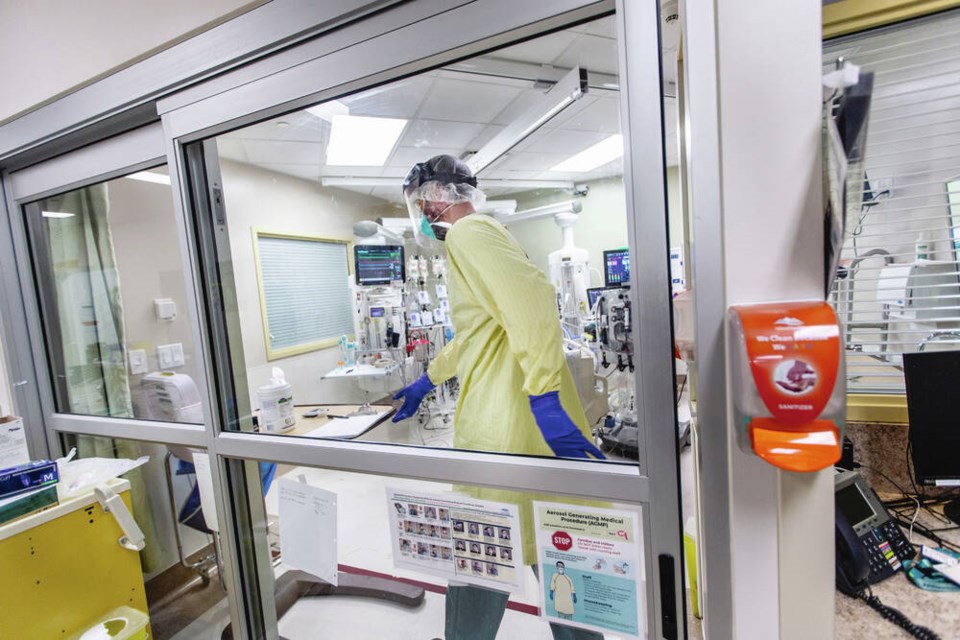B.C. will become the first province in Canada to set rules governing how many patients each nurse can take care of, in an effort to prevent burnt-out nurses from leaving the profession.
It will mean spending $750 million over the next three years to hire thousands more nurses to prop up a critically understaffed workforce.
The B.C. Nurses’ Union called the nurse-to-patient ratios “groundbreaking.”
Health Minister Adrian Dix said it will improve patient care, reduce nurses’ workloads, increase safety and keep nurses in the health-care system. The new ratios will apply in hospitals, in long-term and residential care and to nurses working in the community and non-hospital care settings.
In B.C., the nurse-to-patient ratios will be 1-to-1 for ventilated critical care patients, 1-to-2 for high acuity patients and high-dependency mental health care, 1-to-3 for specialized care, 1-to-4 for in patient and palliative care and 1-to-5 for rehabilitative care.
Dix did not have a date for when the ratios will come into effect.
The government and union are still working out whether the ratios will be different depending on whether a nurse is working a morning, night or weekend shift. Ratios will be standard across B.C. and not vary among health authorities.
Nurse to patient ratios are used in Australia and California, but nowhere else in Canada. In the Australian state of Queensland, for example, nurse to patient ratios in hospitals are one nurse to four patients in the morning and one to seven at night.
A study carried out by the University of Pennsylvania school of nursing found that Queensland’s new ratios saved the lives of 145 patients in the first year and helped avoid 255 re-admissions and 29,200 hospital days — all of which saved the state government an estimated $55.2 million to $83.4 million.
The patient ratios are a key part of the tentative collective agreement reached between the bargaining branch of the B.C. Nurses’ Union and the Health Employers Association and the B.C. government on March 31. The three-year agreement which covers 2022 to 2025, applies to approximately 51,500 registered, psychiatric and licensed practical nurses in B.C.
If the agreement ratified by members, nurses will get a retroactive 25-cent-an-hour increase for 2022 and a 12 per cent raise over the three years, plus up to 2.25 per cent in cost of living adjustment based on inflation. Union members will vote to ratify the agreement starting April 20.
On top of the $4.5 billion in labour costs for nurses in 2022, the nurse to patient ratios will cost taxpayers an additional $200 million this fiscal year, $250 million in 2024-25 and $300 million in 2025-26.
A shortage of nurses, especially in rural and remote B.C. communities has forced some emergency rooms to close temporarily, which also puts a strain on paramedics in those communities who spend hours driving patients to the nearest hospital.
As of March 21, according to the most recent figures available from Statistics Canada, B.C. had 7,100 nursing vacancies, an increase of 2,835 vacancies since the same time last year. Two thirds of those vacancies are among registered nurses and registered psychiatric nurses and the rest are among licensed practical nurses.
To hire the required nurses, the province will ramp up its national and international recruitment. The government will spend $108.6 million a year to create new clinical mentorship positions to support new graduate nurses, internationally trained nurses and nurses changing jobs.
The province will also expand a program that allows nursing students to take part-time positions in the health system while attending school.
The province will also have to add more nurses to replace employees nearing retirement: 20 per cent of nurses in B.C. are over the age of 55 and 41 per cent are over the age of 45.
Last year, the province announced it will spend $12 million to fast-track internationally trained nurses through the cumbersome accreditation process in an effort to attract more nurses. Dix said in April he hoped the strategy to reduce costs and red tape for internationally-trained nurses would attract 1,500 new nurses.
>>> To comment on this article, write a letter to the editor: [email protected]



